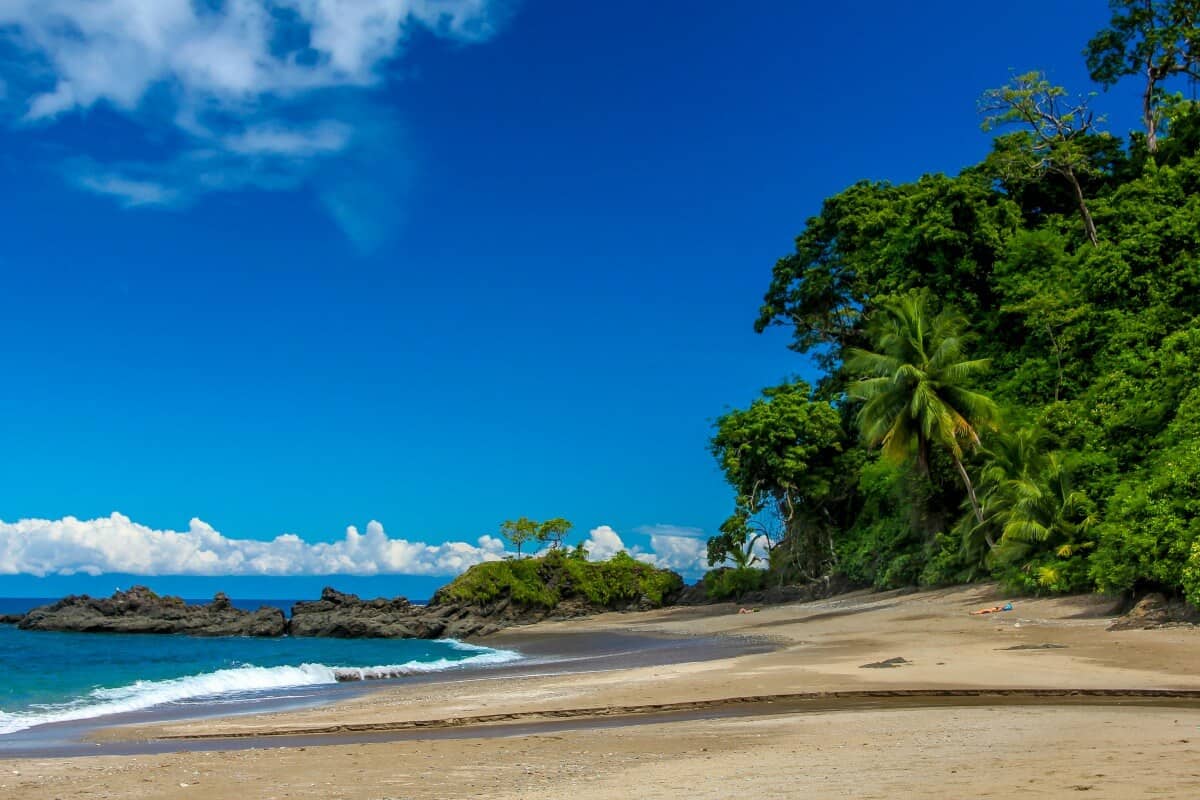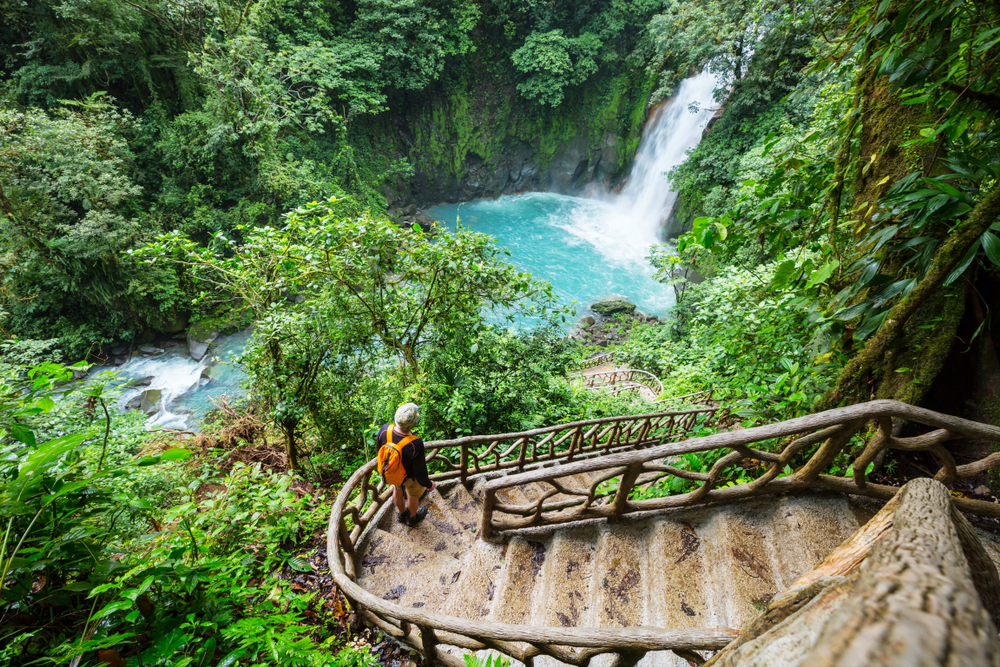Ecotourism destinations in costa rica – Embark on an extraordinary journey to Costa Rica, a haven for ecotourism enthusiasts, where lush rainforests, pristine beaches, and vibrant wildlife await. Immerse yourself in the beauty of nature while supporting sustainable practices that protect this captivating land.
From the cloud-shrouded forests of Monteverde to the vibrant coral reefs of Cocos Island, Costa Rica offers a diverse array of ecosystems teeming with unique flora and fauna. Engage with local communities, learn about their traditions, and contribute to their well-being through responsible tourism.
Costa Rican Ecotourism
Costa Rica is a global leader in ecotourism, a form of responsible travel that minimizes environmental impact and supports local communities. Ecotourism principles emphasize preserving natural and cultural heritage while promoting economic development and social well-being.
Significance of Ecotourism in Costa Rica
Ecotourism is vital for Costa Rica’s economy, environment, and society. It:
- Generates significant revenue: Ecotourism accounts for over 20% of Costa Rica’s GDP.
- Protects biodiversity: Ecotourism encourages the preservation of Costa Rica’s diverse ecosystems and wildlife.
- Empowers local communities: Ecotourism creates jobs and supports local businesses, empowering rural communities.
Growth of Ecotourism in Costa Rica
Costa Rica’s ecotourism industry has experienced remarkable growth:
- Tourist arrivals: The number of international tourists visiting Costa Rica has increased by over 50% in the past decade.
- Protected areas: Costa Rica has expanded its protected areas to over 25% of its landmass.
- Sustainable practices: The country has implemented strict environmental regulations and promotes sustainable tourism practices.
Top Ecotourism Destinations in Costa Rica
Costa Rica is renowned for its exceptional biodiversity and breathtaking natural beauty, making it a prime destination for ecotourism. With diverse ecosystems ranging from lush rainforests to pristine beaches, the country offers a plethora of opportunities for nature enthusiasts to immerse themselves in the wonders of the natural world.
Ecotourism Destinations in Costa Rica
The following table presents a selection of popular ecotourism destinations in Costa Rica, each offering unique experiences and attractions:
| Destination | Region | Highlights | Activities |
|---|---|---|---|
| Corcovado National Park | Osa Peninsula | – One of the most biodiverse places on Earth
| – Wildlife watching
|
| Tortuguero National Park | Caribbean Coast | – Nesting site for green sea turtles
| – Turtle watching
|
| Monteverde Cloud Forest | Central Highlands | – One of the most famous cloud forests in the world
| – Hiking
|
| Manuel Antonio National Park | Central Pacific Coast | – Picturesque beaches
| – Beach relaxation
|
| Arenal Volcano National Park | Northern Highlands | – Active volcano with stunning views
| – Hiking
|
| Tenorio Volcano National Park | Northern Highlands | – Home to the Blue Lagoon, a vibrant turquoise-colored river
| – Hiking
|
| Poás Volcano National Park | Central Highlands | – Active volcano with a large crater lake
| – Hiking
|
| Irazú Volcano National Park | Central Highlands | – Highest volcano in Costa Rica
| – Hiking
|
| Cahuita National Park | Caribbean Coast | – Coral reefs
| – Snorkeling
|
| La Amistad International Park | Southern Highlands | – Largest protected area in Costa Rica
| – Hiking
|
Unique Ecosystems and Biodiversity
Costa Rica is renowned for its exceptional diversity of ecosystems and unparalleled biodiversity, encompassing a rich tapestry of rainforests, cloud forests, mangroves, and volcanoes.
The country’s rainforests are teeming with an astounding array of plant and animal life, including iconic species such as the scarlet macaw, three-toed sloth, and resplendent quetzal. Cloud forests, nestled high in the mountains, offer a mystical and ethereal experience, where visitors can witness the spectacle of epiphytes clinging to towering trees.
Endemic Species and Conservation
Costa Rica is home to an extraordinary number of endemic species, found nowhere else on Earth. These include the golden toad, a critically endangered amphibian, and the white-faced capuchin monkey, a playful and intelligent primate.
The country has made significant efforts in conservation, establishing numerous national parks and protected areas to safeguard its precious ecosystems and wildlife.
Wildlife Viewing Opportunities
Costa Rica offers a multitude of opportunities for wildlife viewing and nature experiences. Visitors can embark on guided tours through lush rainforests, where they can spot elusive jaguars, anteaters, and tapirs. Birdwatching enthusiasts can explore the country’s diverse habitats, home to over 900 species of birds.
For those seeking a more immersive experience, overnight stays in jungle lodges provide the chance to witness nocturnal wildlife and immerse themselves in the heart of Costa Rica’s natural wonders.
Sustainable Tourism Practices

Costa Rica is renowned for its commitment to sustainable tourism, implementing various practices to preserve its natural and cultural heritage. These practices aim to minimize the environmental impact of tourism while promoting economic and social well-being.
Responsible waste management is a crucial aspect of sustainable tourism in Costa Rica. The country has established comprehensive recycling and waste disposal systems to reduce the amount of waste ending up in landfills. Additionally, many ecotourism operators use biodegradable materials and encourage visitors to minimize waste generation.
Energy Conservation, Ecotourism destinations in costa rica
Costa Rica has made significant strides in energy conservation, utilizing renewable energy sources such as hydropower, geothermal, and wind power to meet its energy needs. Ecotourism destinations often incorporate energy-efficient practices, such as using LED lighting, solar panels, and low-flow appliances.
By reducing energy consumption, these practices help mitigate greenhouse gas emissions.
Community Involvement
Sustainable tourism in Costa Rica emphasizes community involvement, ensuring that local communities benefit from tourism activities. Many ecotourism operators work closely with local communities, providing employment opportunities, supporting cultural preservation, and promoting educational programs. This approach fosters a sense of ownership and responsibility among local communities, encouraging them to protect and conserve their natural and cultural heritage.
Certification Programs and Eco-Friendly Accommodations
Costa Rica has implemented several certification programs to recognize and promote sustainable tourism practices. The Costa Rican Tourism Board (ICT) awards the Certification for Sustainable Tourism (CST) to businesses that meet specific environmental and social criteria. Eco-friendly accommodations, such as lodges and hotels, play a vital role in promoting sustainable tourism.
These accommodations often incorporate sustainable building practices, use renewable energy sources, and offer eco-friendly amenities.
Best Practices for Ecotourists
Ecotourists can contribute to sustainable tourism practices by adopting responsible behaviors. Some best practices include:
- Respecting wildlife and natural habitats by observing them from a distance and avoiding disturbing their behavior.
- Choosing ecotourism operators that are certified or have a proven track record of sustainable practices.
- Packing light and avoiding single-use plastics to minimize waste generation.
- Conserving water and energy by taking shorter showers, turning off lights when not in use, and unplugging electronics.
- Supporting local businesses and purchasing souvenirs that are made from sustainable materials.
Cultural Immersion and Community Engagement: Ecotourism Destinations In Costa Rica
Cultural immersion is an integral aspect of ecotourism, allowing visitors to connect with local communities, understand their traditions, and contribute to their livelihoods. By engaging with local people, tourists gain a deeper appreciation for the region’s cultural heritage and support sustainable tourism practices.
In Costa Rica, numerous opportunities exist for cultural immersion. Visitors can participate in traditional dance and music workshops, learn about indigenous crafts, and visit local markets to support artisans and farmers. Community-based tourism initiatives, such as guided tours led by local experts, provide an authentic and enriching experience while empowering local communities.
Examples of Cultural Experiences
- Attend a traditional dance performance by the Boruca indigenous community, renowned for their intricate masks and vibrant costumes.
- Participate in a cooking class with a local family, learning about traditional Costa Rican cuisine and sharing stories.
- Visit the Monteverde Cloud Forest Reserve, home to the largest community of Quakers outside the United States, and engage with their sustainable living practices.
- Explore the Tortuguero Canals, a labyrinth of waterways inhabited by indigenous Bribri and Cabecar communities, and learn about their connection to the natural environment.
- Support local artisans by visiting craft markets and purchasing handmade souvenirs, such as pottery, wood carvings, and textiles.
Planning an Ecotourism Trip to Costa Rica

Costa Rica is a top ecotourism destination, offering a wealth of opportunities to explore its diverse ecosystems and engage with local communities. Planning an ecotourism trip to Costa Rica requires careful consideration to ensure a sustainable and enriching experience.To begin, choose the best time to visit.
Costa Rica has two seasons: the dry season (December to April) and the rainy season (May to November). While the dry season offers clearer skies and less rain, the rainy season showcases the country’s lush vegetation and provides opportunities for wildlife viewing.Next, consider transportation options.
Flying into Juan Santamaría International Airport (SJO) in San José is the most convenient option, but domestic flights and buses connect major cities and destinations. For a more sustainable approach, opt for local transportation or rent a car and explore the country at your own pace.Accommodation choices range from eco-lodges to luxury resorts.
Look for properties certified by the Costa Rican Tourism Board’s Certification for Sustainable Tourism (CST) to ensure they adhere to environmental and social responsibility standards.Pack light and responsibly. Bring comfortable clothing, hiking shoes, a rain jacket, and insect repellent. Consider reusable water bottles and containers to minimize waste.To enhance your experience, choose responsible tour operators and travel agencies that prioritize sustainability.
Look for companies that support local communities, minimize their environmental impact, and adhere to ethical wildlife viewing practices.
Final Thoughts

As you plan your ecotourism adventure in Costa Rica, remember to prioritize sustainable practices, support local businesses, and minimize your environmental impact. Embrace the opportunity to connect with nature, enrich your understanding of different cultures, and create memories that will last a lifetime.
Helpful Answers
What are the best times to visit Costa Rica for ecotourism?
The dry season (December to April) offers optimal weather conditions for wildlife viewing and outdoor activities.
How can I support sustainable tourism in Costa Rica?
Choose certified eco-friendly accommodations, participate in community-based tourism initiatives, and minimize your plastic consumption.
What unique wildlife experiences can I expect in Costa Rica?
Encounter sloths in the rainforests, witness sea turtles nesting on the beaches, and spot vibrant birds in the cloud forests.
